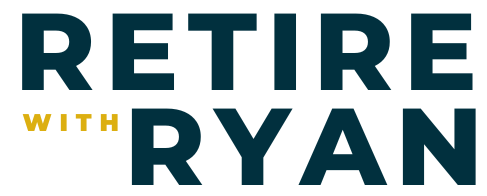How To Find and Hire a Fee Only Financial Advisor (Part 3), #203
How do you find a fee-only financial advisor who’s the right fit for you? I’ve outlined a detailed process that you can use to create a list, research your list, and interview and hire the perfect fit for you. I’ll cover it all in this episode.
This is Part 3 of a five-part series about financial planners to celebrate the release of my first book, “Fiduciary: How to Find, Hire, and Establish a Trusted Partnership with a Fee-Only Advisor.”
You will want to hear this episode if you are interested in...
[1:00] What we covered in last week’s episode (Part 2)
[4:05] Step #1: Compile a list of financial advisors
[9:46] Step #2: Research the list you’ve compiled
[15:00] Step #3: Interview your final list of advisors
[23:33] What we’re covering in Part 4 of this series
Step #1: Compile a list of financial advisors
To compile a list of fee-only financial advisors, you need to ask yourself some important questions:
Do you want to work with a local advisor that you can meet with in person? Are you willing to work with someone over Zoom or over the phone?
Is there a specific specialty that you’re seeking? Do you need help with retirement planning, college planning, or business planning? Many advisors specialize in narrow niches (mine is retirement planning for people over 50).
Unfortunately, there isn’t one website you can check out to find all of the fee-only financial advisors in the United States.
However, one of the resources I like to use is the Certified Financial Planner Board of Standards website. This is the governing body through which people obtain their CFP certification.
The only downside of the CFP board is that they allow both fiduciary and non-fiduciary advisors to become members. It’s difficult to act as a fiduciary if you’re a broker or carrying an insurance license. If you do work with a CFP, I always recommend working with one that’s fee-only.
You can use any of the sites in the resources below—filtered by location and specialty—to compile a list of potential options.
Step #2: Research the list you’ve compiled
Start by heading to a financial planner’s website and poking around a little. If they state that they’re a fee-only financial advisor, confirm that.
What do they offer? Do they offer financial planning only? Or do they only offer ongoing advice and investment management?
Research their background by using BrokerCheck. You don’t want to find them there. Instead, you’d hope to see that they were previously registered (but no longer are).
Head to Investment Adviser Public Disclosure to see if they’re a Registered Investment Advisor. They can be registered as brokers and insurance agents as well as an IAR.
Look up the specific firm and find their “ADV.” The ADV is a disclosure document that every RIA has to file. This is an easy way to find out if they’re a broker, an insurance agent, or if they have any other conflicts of interest.
Look up the individual financial advisor. Download the report to look at their work history and any disclosures or complaints that they’ve had.
Once you’ve done this, it’s time to vet your top choices.
Step #3: Interview your final list of advisors
Here are 10 questions that you must ask every potential advisor:
Are you a fiduciary at a fee-only firm? Will you sign “The Fiduciary Pledge?” If they won’t sign this, you can end your interview. If they don’t, they’re not a fiduciary.
Do you have any disclosures or complaints? (If they do, find out what the backstory is)
Do you have any specific certifications or industry designations? Are you a CFP?
Do you have any specialties? What services do you provide?
How are you compensated for the services you provide? What is your fee schedule?
What all-in costs will I be paying annually?
What investment philosophy do you follow? (You want to know how they’ll manage your portfolio)
Who is your custodian? How can I see my money? ( You don’t want the advisor holding the money, you want a third party holding it)
How often will you communicate with me? And how will you communicate with me?
How long has your longest client been with you? How many clients do you advise?
I really, you want someone with experience. Look for someone who’s worked with clients for 5–10 years or longer. You also want them to manage fewer than 200 clients.
This process should help you narrow down your list and hire someone. I cover each section in-depth in this episode, so don’t miss it.
Resources Mentioned
Subscribe to the Retire with Ryan YouTube Channel
“Fiduciary: How to Find, Hire, and Establish a Trusted Partnership with a Fee-Only Advisor,”
